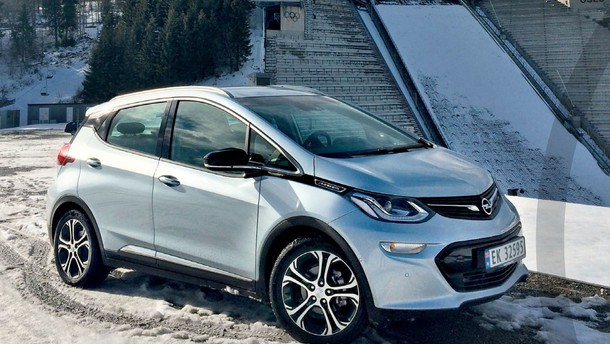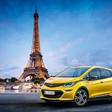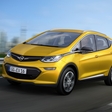
Of course, we're talking buying an electric car. The previous generation of cars had too little a range (at least on paper, even if in practice it turned out not to be an issue). Or (in Tesla's case), there was enough, but the car was over-priced. 100 grand is just not a sum normal folks can afford to pay. Then arrived (and is still on its way) the current generation of electric cars, boasting a realistic range of over 200 km. E-Golf, Zoe, BMW i3, Hyundai Ioniq etc. all hit the 200 km mark, regardless of driving conditions, and they max out at 250 (or more), when the conditions are good. This is more than enough, unless you're headed out for a long journey. But to avoid having to deal with concerns about a long drive, German owners of the new e-Golf are loaned (as part of their e-Golf deal) a conventional vehicle for the duration of their holidays, anywhere from two to three weeks a year. Looking at the history of their electric cars, Opel took it even further. If previously they offered a range of less than 200 km, and prices revolving around 35 grand (or more, depending on the model), then this time their specs reached a new dimension:
30 grand and 400 km? Yes, Ampera-e is nearly there. In Germany, the entry level model is estimated at 39,000 Euros. And the range? Opel prides itself on the official estimate of 520 km. That is, in fact, what they're obliged to state, since it's been established by the currentlyvalid, though hopelessly outdated, NEDC standard. Trying to avoid convincing the clients of the impossible, the car manufacturers have, however, long been in the habit of also discretely throwing in the realistic, or at least the upcoming, WLTP range. In keeping with that, Ampera-e offers a range of 380 km, but that's not all. To facilitate the drivers' needs, Opel also offers a user-friendly, web-based range calculator. And how did they get to these numbers? The most important reason is that Ampera-e and its American brother, Chevrolet Bolt, were conceived as electric cars from the start, which allowed the engineers to accurately predict, early on, how many batteries will fit in the car at an acceptable price. Batteries are not problematic so much because of their weight and volume (since they can make small miracles when properly shaped along with the car), as their price. What good would it be to have plenty of space for a large battery, if the car were sold at a price that would make it largely inaccessible? Still, the GM engineers installed the battery by fully exploiting the unused room in the floor of the car (which means that Ampera-e is, design-wise, closer to crossovers than classical hatchbacks) and under the seats.
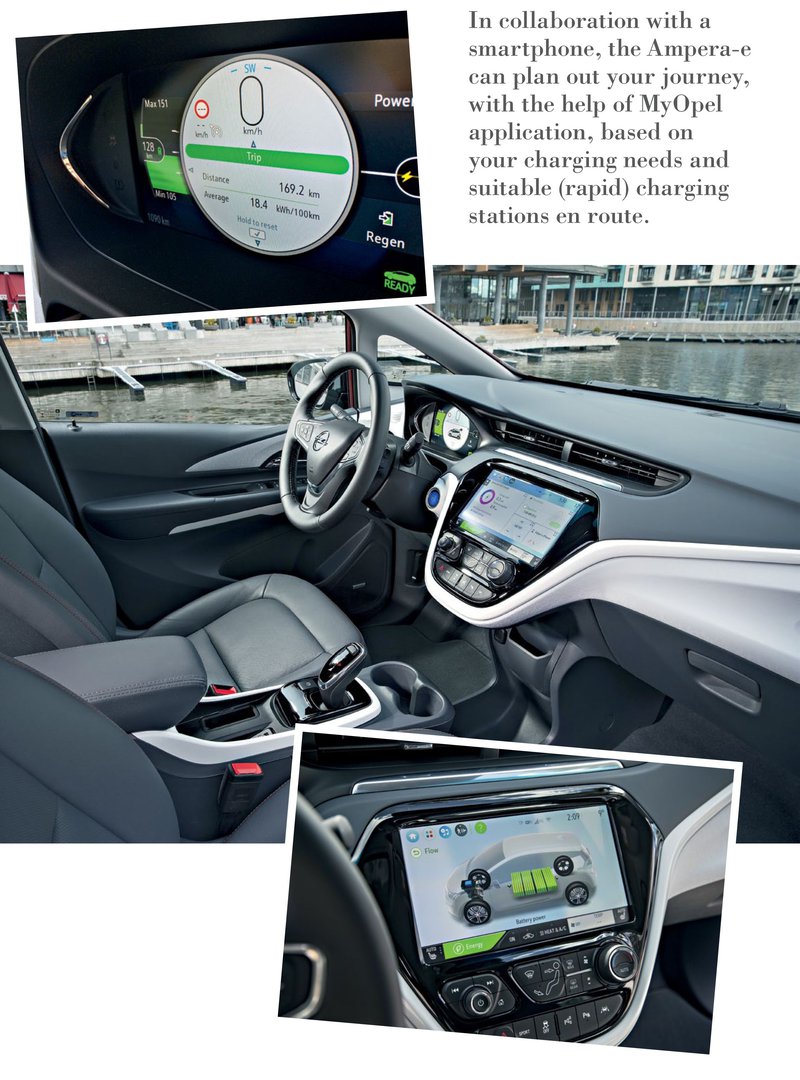
Subsequently, the back seats sit higher, which may make driving at the back, for tall passengers with their heads uncomfortably close to the ceiling, a less pleasurable experience (entering the car also requires some attention). Having said that, for normal family use, with adults up front and kids at the back, the car offers more than enough space. Same goes for the trunk: To expect a 4.1 m long car to exceed a 381 l volume, which is the capacity of Ampera-e, would be unrealistic, even in a conventional car.
Its 60 kWh Li-ion battery can be charged at CSS fast charging stations at 50 kW (which allows it to get enough energy for at least a 150 km drive, over the course of 30 minutes), and at a power of no more than 7.4 kW on regular AC charging stations. In practice, that means that Ampera-e can be fully-charged at home overnight, providing you have an adequate 3-phase plug. Less powerful single-phase plugs will restore the battery in about 16 hours (so that, in the morning, even in the worst case scenario, Ampera-e is ready for at least a 100 km drive). The Ampera-e drives like a true electric car, which was a smart move on the part of Opel.That means that the car can be driven solely by use of the accelerator. No brakes. Once you've switched to L mode, taking your foot off the accelerator will recuperate enough energy that living up to the demand of daily traffic without the use of brakes will be easy. The driver can go for added recuperation by pressing a paddle on the left side of the steering wheel, resulting in a 0.3 G deceleration and electricity regeneration at 70 kW power.
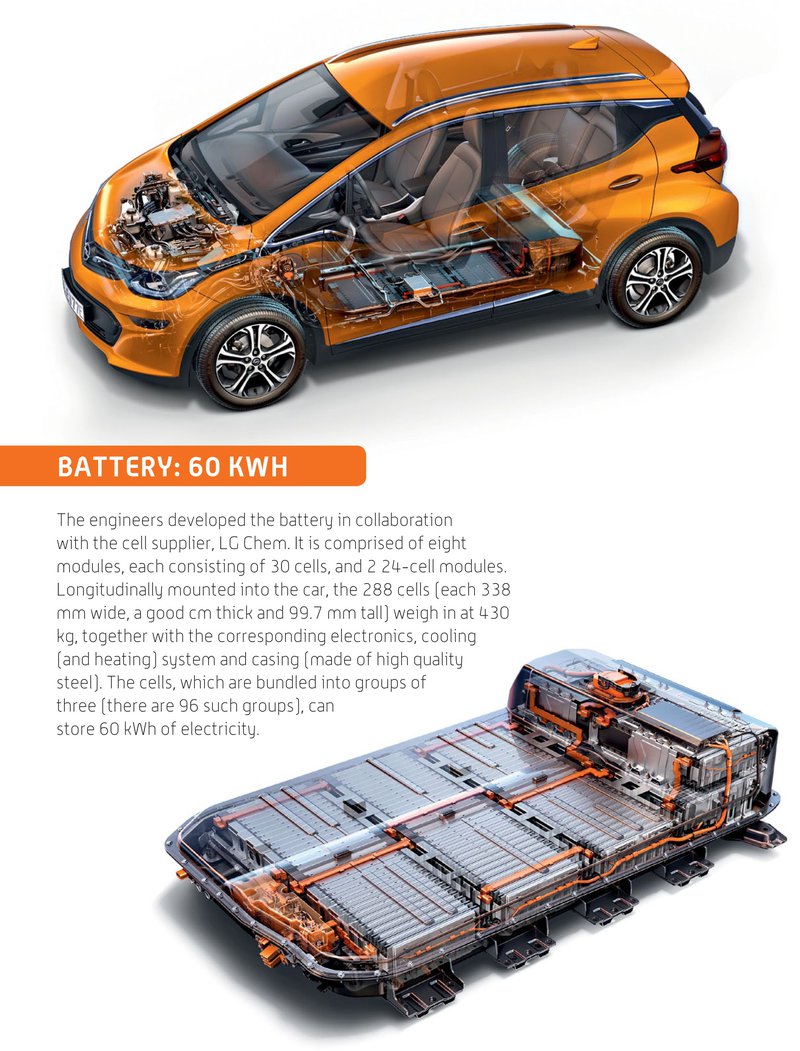
After only a few kilometers, the driving becomes second nature, to the point where the driver can't but wonder about the use of other driving modes. Incidentally, when paired with a smartphone, the Ampera-e can plan out your journey (through the MyOpel application) based on your charging needs and suitable (rapid) charging stations en route. Ampera-e will not exhaust you over long trips. While it's true that the serial Michelin Primacy 3 tires proved to be rather loud on the rough Norwegian asphalt (but can make this up by being able to self-seal holes of up to 6 mm in diameter), the overall comfort remains unaffected. If the chassis is not among the softest (understandable, if you look at the construction and the weight of the car), then you'll surely marvel at its rather precise steering wheel and dynamic behavior along curves (especially when the driver presses the Sport button, for optimal sport performance of both the powertrain and steering wheel).
There's no shortage of assistance systems, either, including the automatic braking (sensitive to pedestrians) that brings the car to a standstill at up to 40 km/h, and is disengaged only at speeds greater than 80 km/h. Interestingly, the car features no autonomous cruise control or LED headlights (Opel opted for the bixenon solution) as part of the equipment or assistance systems. The seats are comfortable, even if slightly hard and not very wide. Because they're thin, there's more room behind them than one would expect.
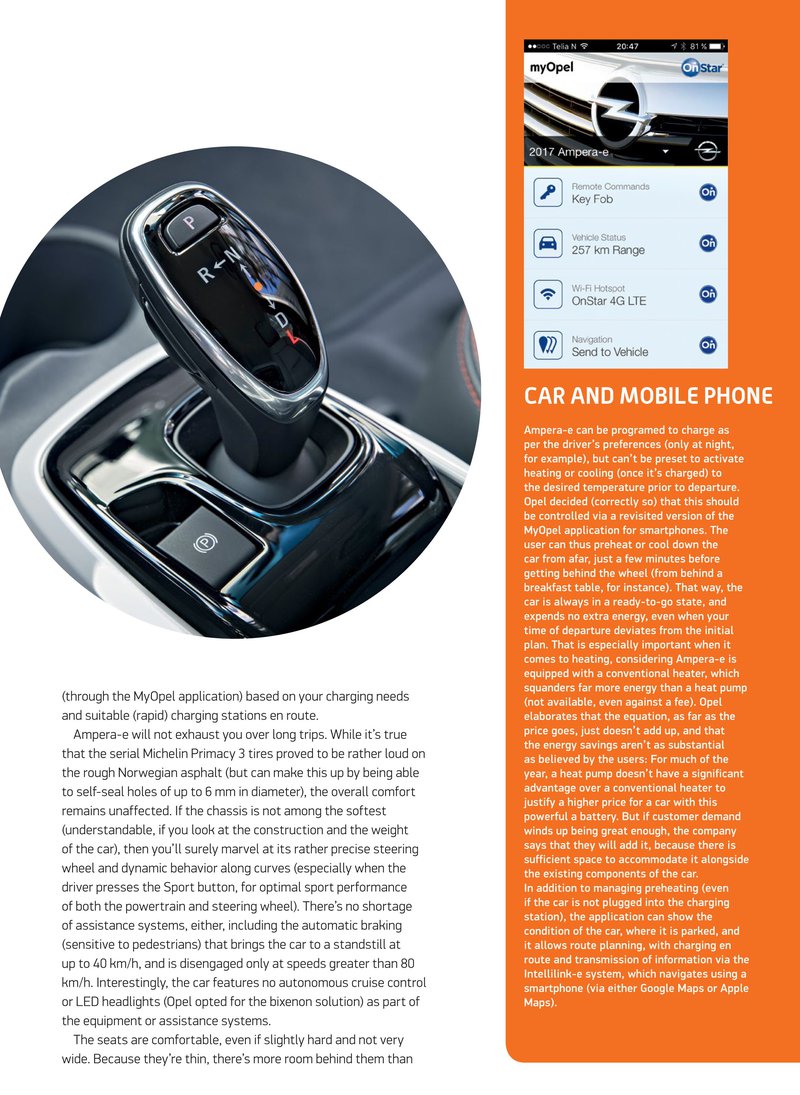
In collaboration with a smartphone, the Ampera-e can plan out your journey, with the help of MyOpel application, based on your charging needs and suitable (rapid) charging stations en route.
Materials? The plastic is largely hard, and mostly of good quality. In fact, most of the cabin plastic has a pleasant surface finish, but we did miss a soft fabric on the inside of the doors, to better cushion the driver's elbow. Same applies to the knees. On the upside, the batteries placed under the cabin enable easy entrance into the car. The car is spacious enough to easily accommodate the driver and different bits and bobs. The space before him or her is dominated by a pair of large LCD screens. The gauge screen is easily legible (with fewer and better-arranged information than in the Ampera) with adjustable contents. The central touch infotainment screen is by far the biggest in all of the Opel fleet (and even across other brand names, with the exception of Tesla). Working in perfect tandem with smartphones (thanks to the Apple CarPlay and Android Auto application), the Intellilink-e infotainment system provides information on electric propulsion (and its settings) and is easily legible, even under direct sunlight. It goes without saying that it can also be programmed with settings, such as when and how to charge the Ampera-e. The Priority Charging function, for instance, charges the car to 40% capacity in the shortest time possible, only to disconnect the car immediately thereafter–-a perfect solution for rapid charging stations, where a fill-up is charged, unreasonably and foolishly, by the consumption of time, rather than energy.
In 2018 the starting price for Ampera-e in Germany will be 39,330 €.
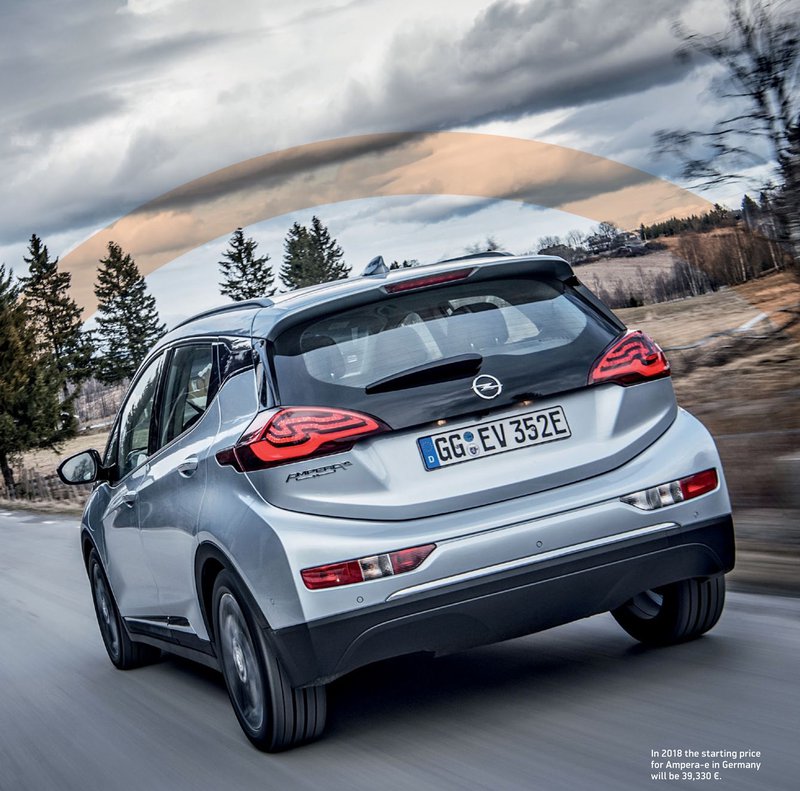
With over 4000 orders in just a few days, Norway was the first country in Europe to launch sales, and will be followed by Germany, Netherlands and Switzerland.
